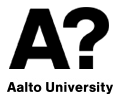Topic 5 – Lessons Learnt

Image by Gerd Altmann from Pixabay
So, here we are! The last day on ONL211. Its been a hectic, but very enjoyable 12 weeks for me. The happiest surprise for me, was how was much fun it was to learn together with my wonderful group members and facilitators. For me, the interactions with them have been the biggest benefit of doing the course. Of course, I have also learnt a lot outside that. To begin with, I feel more confident entering online teaching situations, armed with the conceptual frameworks we learnt about (e.g. Visitor-Resident, David White (White & Cornu (2011)) and Community of Inquiry (COI) framework (Garrison et al. (2000)), and the practical tools we tried (e.g. Padlet, Miro Board, ThingLink, The Learning Toolbox, Powtoon, Simple Show, Meme generator, Google Jam Board, Mentimeter, Zoom Annotation tool), to navigate teaching in online spaces. From a personal/philosophical viewpoint, I am now much more convinced than I was before the course, on the value and sense in going open!
How will this directly affect my teaching practise? In my Topic 4 blogpost, I mentioned some learnings from the course that I plan to implement in my teaching practise. Below, I will continue on this theme:
Implications of ONL211 for my teaching practise
As I mentioned last week, I am keen to complement my transmissive lectures on technical topics, by allowing time during lectures for discussion on the application of taught content to real-world applications in science and outside science. The course will have a group-activity component and individual assignment component, which will respectively allow for collaborative learning and individual reflection respectively.
I am also interested to experiment with open syllabi, i.e. allow student input in some portions of the syllabus that will be covered during the course. Further, I envisage facilitating group exercises whereby the students collectively contribute authoritative, high-quality content to Wikipedia or Scholarpedia articles on relevant topics. I am also keen to share my teaching content/presentations through OER (Open Educational Resources) portals, as well as share my lecture content through Open Textbooks and MOOCs (Massively Open Online Courses). I feel a lot more informed about entering the MOOC space after ONL211. Finally, I will solicit student expectations of the course and feedback from the course, through online means. I think online channels would make the students more comfortable sharing their expectations and feedback.
In all this, I feel the biggest challenge will be to keep the focus on student learning. It goes without saying but, the framework and tools I have learnt about are most useful when they are used as tools to facilitate student learning, and I hope I can employ them effectively toward that end.
Thank you ONL211!
References
- White, D. & Le Cornu, A. (2011) Visitors and residents: A new typology for online engagement. First Monday, 16(9)
- Garrison, D. R., Anderson, T., & Archer, W. (2000). Critical inquiry in a text-based environment: Computer conferencing in higher education model. The Internet and Higher Education, 2(2-3), 87-105.






